Borehole Drilling in Kenya
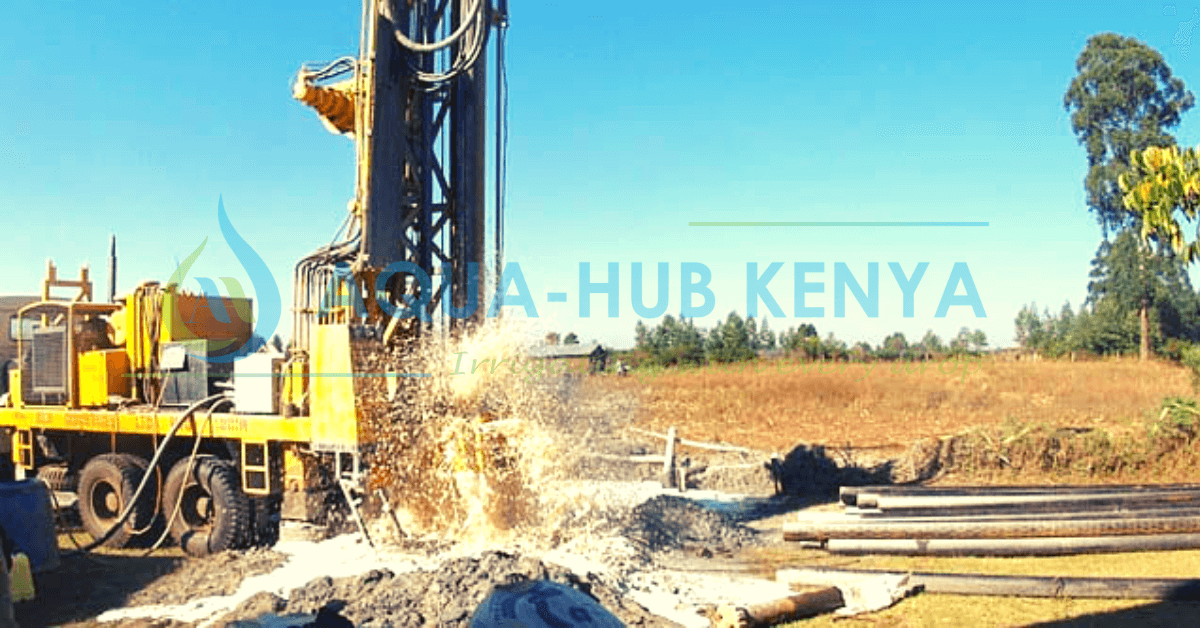
Borehole drilling in Kenya is done to meet the water demands of the ever-increasing household, agricultural, industrial, and animal populations. Utilizing the most advanced, cutting-edge borehole drilling equipment, Kenya primarily does effective borehole drilling (known commercially as borehole drilling rigs). Drilling manually involves the use of human energy. With years of drilling and equipment experience, we are currently one of Kenya’s largest borehole drilling firms. We consistently work hard to provide our customers with the finest and fastest services. Our top-notch borehole drilling services in Kenya are constantly tailored to the demands of the client.
What is a borehole in Kenya?
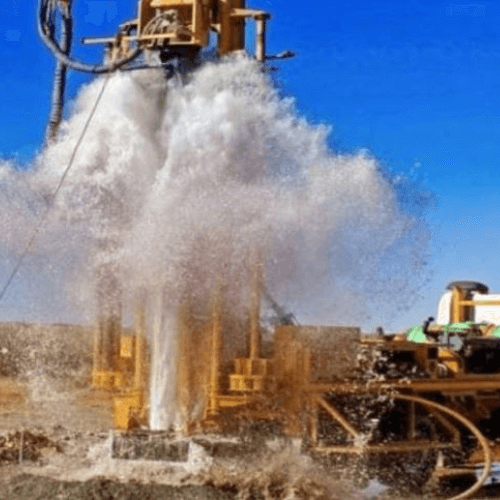
A borehole is a type of well that is drilled into the ground. This is to access underground water or other subsurface resources. In Kenya, boreholes are commonly used to provide access to clean water in rural areas. Usually in places where surface water sources such as rivers and lakes may be scarce or contaminated. They can also be used to extract groundwater for irrigation or other agricultural purposes. Or to access mineral resources such as oil or natural gas. Boreholes can be drilled using different techniques, depending on the geology of the area and the resources being sought.
What are the properties of a borehole?
Properties of a borehole can include the following:
- Depth: The distance from the surface of the ground to the bottom of the borehole.
- Diameter: The width of the borehole.
- Location: The geographic coordinates of the borehole, which can be important for mapping and finding the borehole again later.
- Construction materials: The materials used to line the borehole, such as steel, PVC, or concrete.
- Water yield: The amount of water that can be pumped from the borehole.
- Water quality: The chemical and physical characteristics of the water, such as pH, temperature, and the presence of contaminants.
- Static water level: The water level in the borehole when no water is being pumped out.
- Drawdown: The difference between the static water level and the water level when water is being pumped out.
- Aquifer properties: The properties of the rock or soil that the borehole is drilled through. Such as porosity, permeability and storage coefficient.
What is borehole drilling?
Borehole drilling is the process of drilling a hole into the ground to access underground water or other subsurface resources. The process typically involves the use of a drilling rig. This is a machine that rotates a drill bit to cut through the soil and rock. The drilling rig is typically mounted on a truck or trailer and can be moved to different locations.
The drilling process begins by excavating a shallow pit to provide access to the ground. A drilling rig is then set up over the pit. A drill bit attached to the end of a long drill stem is lowered into the hole. The drill bit is rotated and forced into the ground, cutting through the soil and rock. As the drilling progresses, the drill bit is periodically removed. The borehole is then lined with casing to prevent collapse and contamination.
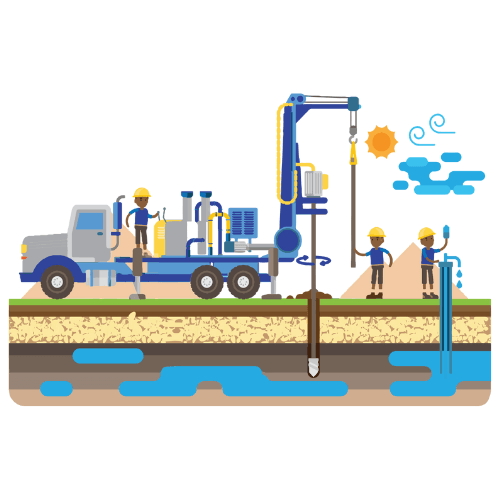
Once the borehole reaches the desired depth, a pump is installed to bring the water to the surface. The borehole is then tested to evaluate the yield and quality of the water. Once the borehole is completed, it is sealed with a cap to prevent contamination and to protect the aquifer. Borehole drilling can be a complex and time-consuming process. However, it is an effective way to access underground water resources. This is mainly in areas where surface water sources are scarce or unreliable.
How deep should a borehole be in Kenya?
The depth of a borehole in Kenya will depend on several factors. Including the location, geology, and the purpose of the borehole. In general, boreholes for domestic and small-scale agricultural use will be shallower than those drilled for commercial or industrial use. For domestic and small-scale agricultural use, boreholes are typically drilled to a depth of between 20 and 150 meters. The depth will depend on the depth to water table and the depth of the aquifer. If the water table is at a shallow depth, the borehole will be shorter. However, if the water table is at a deep depth, the borehole will be deeper.
For commercial and industrial use, boreholes may be drilled to depths of several hundred meters or more. This will depend on the location and the resources being sought. For example, boreholes drilled for geothermal energy production may reach depths of several kilometers. It’s important to note that the drilling process and the drilling rig used will also affect the depth of the borehole. For example, a rotary drilling rig can drill deeper boreholes than a hand-operated rig. It is best to consult with experienced borehole drilling companies. Or hydrogeologists to determine the optimal depth for a borehole in a specific location.
What are the requirements for drilling a borehole in Kenya?
There are several requirements that must be met in order to drill a borehole in Kenya. These requirements are put in place to ensure that the borehole is drilled safely. And in an environmentally responsible manner, and that the water resources are protected for future use.
- Permits and licenses: You will need to obtain the necessary permits and licenses from the government authorities in charge of water resources management in Kenya. The permits include the Ministry of Water and Sanitation, the Water Resources Management Authority (WRMA), and the County government.
- Site assessment: A site assessment must be carried out to determine the geology, hydrogeology and water resources available in the area. This assessment must be done by qualified hydrogeologists or geologists, who will also provide a report detailing the potential yield and quality of the water.
- Environmental impact assessment (EIA): An environmental impact assessment (EIA) must be conducted to determine the potential impacts of the borehole on the surrounding environment. This assessment will help to identify any potential environmental risks and to develop measures to mitigate them.
- Water abstraction plan: A water abstraction plan must be developed to ensure the sustainable use and management of the water resources. This plan must be approved by the relevant authorities before drilling can commence.
- Drilling and construction standards: The borehole must be constructed to specific standards, including the use of appropriate drilling techniques and materials, and the installation of a pump and appropriate water treatment systems.
- Monitoring and reporting: The borehole must be regularly monitored and maintained to ensure that it continues to provide safe and reliable water. Records of water abstraction, water quality and maintenance must be kept and reported to the relevant authorities.
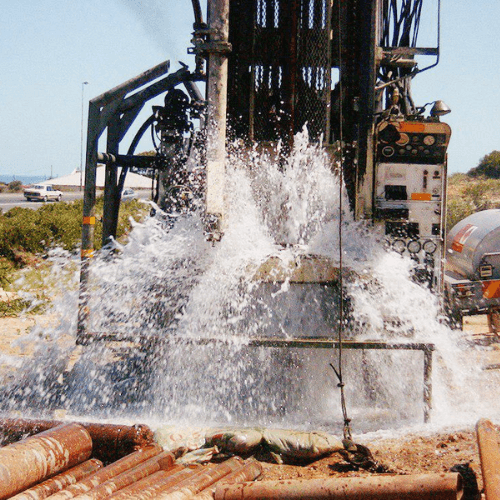
Can you put a borehole anywhere?
In general, boreholes can be drilled in most areas, but the feasibility and success of drilling a borehole in a particular location will depend on several factors. Some of the factors that can affect the feasibility of drilling a borehole include:
- Geology: The type of rock and soil in the area will affect the ease of drilling and the potential yield of the borehole. For example, drilling through hard rock will be more difficult and expensive than drilling through softer soil.
- Hydrogeology: The presence and characteristics of underground water resources, such as the depth of the water table and the permeability of the rock or soil, will affect the feasibility and success of the borehole.
- Water quality: The presence of contaminants, such as chemicals or bacteria, in the water can make it unsafe for consumption or use.
- Environmental considerations: Drilling a borehole can have an impact on the surrounding environment, so it is important to consider factors such as the potential impact on wildlife, ecosystems, or cultural sites.
- Accessibility: The location of the borehole must be easily accessible for drilling and maintenance, and the drilling rig and materials must be able to reach the site.
- Legal and regulatory requirements: There may be local, regional, or national regulations and laws that must be followed when drilling a borehole, such as obtaining permits, conducting environmental assessments, and reporting on water abstraction and water quality.
What is borehole Drilling Procedure in Kenya?
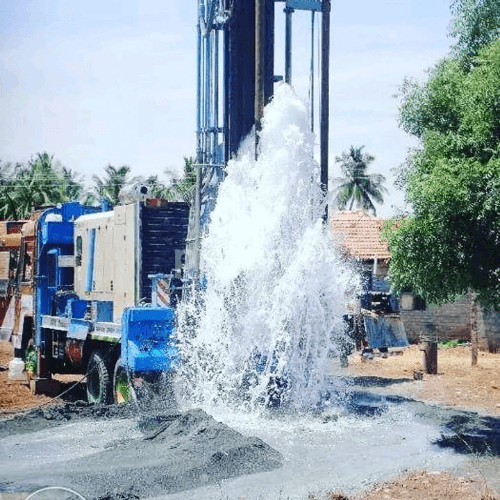
- Obtain permits and licenses: You will need to obtain the necessary permits and licenses from the government authorities in charge of water resources management.
- Site assessment: A site assessment is conducted to determine the geology, hydrogeology, and water resources available in the area. This assessment must be done by qualified hydrogeologists or geologists, who will also provide a report detailing the potential yield and quality of the water.
- Environmental impact assessment (EIA): An environmental impact assessment (EIA) must be conducted to determine the potential impacts of the borehole on the surrounding environment.
- Water abstraction plan: A water abstraction plan must be developed to ensure the sustainable use and management of the water resources. This plan must be approved by the relevant authorities before drilling can commence.
- Borehole drilling: The drilling rig is set up over the pit and a drill bit attached to the end of a long drill stem is lowered into the hole. The drill bit is rotated and forced into the ground, cutting through the soil and rock. As the drilling progresses, the drill bit is periodically removed and the borehole is lined with casing to prevent collapse and contamination.
- Pump and water treatment installation: Once the borehole reaches the desired depth, a pump is installed to bring the water to the surface. The borehole is then tested to evaluate the yield and quality of the water.
- Borehole sealing: Once the borehole is completed, it is sealed with a cap to prevent contamination and to protect the aquifer.
- Monitoring and reporting: The borehole must be regularly monitored and maintained to ensure that it continues to provide safe and reliable water. Records of water abstraction, water quality and maintenance must be kept and reported to the relevant authorities.
